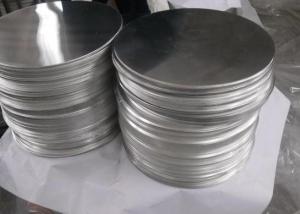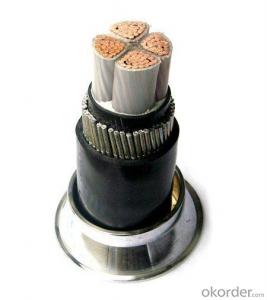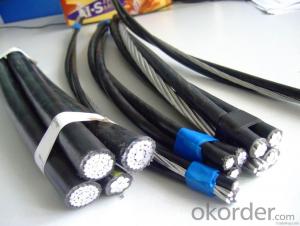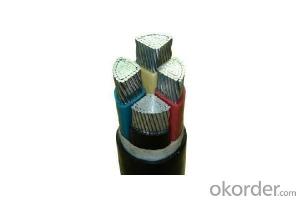striped steel
- Loading Port:
- China Main Port
- Payment Terms:
- TT OR LC
- Min Order Qty:
- -
- Supply Capability:
- -
OKorder Service Pledge
OKorder Financial Service
You Might Also Like
ERW pipes are used in Water Pipelines, Agriculture and Irrigation (Water Mains, Sewerage Systems, Industrial Water Lines, Plant Piping, Deep Tube-Wells & Casing Pipes). Other popular application area includes usage in gas pipe lines (pipe lines for natural gas, LPG and other non-toxic gases). The SW is meant for shallow water applications This could be in a canal, natural stream, culvert, or pipe
Steel Pipes manufacters and Exports huge range of ERW Galvanized Steel Tubes & Steel Pipes. For pipes or tubes size 8 inch (219 mm) OD and below, strip is fed into a set of forming rolls which consists of horizontal and vertical rollers so placed as to gradually from the flat strip in to a tube which is then allowed to pass the welding electrodes. The electrodes are copper disks connected to the secondary of a revolving transformer assembly. The copper disk electrodes make contact on each side of the seam and temperature is raised to the welding point. Outside flash is removed by a cutting tool as the tube leaves the electrodes, inside flash is removed either by an air hammer or by passing a mandnel through the welded tube after the tube has been cooled. This is termed as Electric Resistance Welded or ERW tube/pipe.
- Standard:DIN2391 part 2 , DIN EN10305-1, DIN17175 etc;
- Material: ST35,ST45,ST52.
- Manufacturing method: cold-rolled / cold-drawn
- Delivery condition: BK,BKS,SR,GBK,NBK.
- Certificate
- Factory Certification: 2.2 according to EN
- Acceptance Test Certificate:3.1 according to EN 10204
- Packing:
- in bundles tied with steel strips. External packing by wooden cases if the wall thickness/OD ratio is low.
- Oil-coating is generally necessary especially for export.
- Q:How is stainless steel scrap different from other types of scrap?
- The uniqueness of stainless steel scrap lies in its properties and composition, setting it apart from other forms of scrap. Unlike its counterparts, stainless steel is an alloy that contains a substantial amount of chromium. This infusion of chromium grants stainless steel exceptional resistance to corrosion, making it highly desirable for a multitude of applications. In comparison to other scrap metals, stainless steel scrap exhibits heightened resistance to rust, staining, and tarnishing. This quality renders it optimal for usage in environments where exposure to moisture or harsh chemicals is a concern, such as the food and beverage industry or the manufacturing of medical equipment. Moreover, stainless steel scrap is renowned for its robustness and durability. Its resistance to heat qualifies it for high-temperature applications. Its strength and ability to withstand wear and tear make stainless steel scrap a valuable material in the construction, automotive, and aerospace sectors. Another noteworthy aspect of stainless steel scrap is its recyclability. Stainless steel is fully recyclable, allowing it to be melted down and reused without forfeiting its original attributes. This makes stainless steel scrap a sustainable choice and an integral component of the circular economy. To conclude, stainless steel scrap distinguishes itself from other forms of scrap due to its corrosion resistance, strength, durability, and recyclability. These distinctive features render stainless steel scrap a coveted and highly sought-after material within various industries.
- Q:How is stainless steel scrap used in the manufacturing of kitchen utensils?
- Kitchen utensils are commonly made using stainless steel scrap because of its many advantageous properties. To begin with, stainless steel scrap is melted and combined with other metals to create a new alloy that possesses the specific characteristics needed for kitchen utensils. This alloy is extremely resistant to corrosion, rust, and staining, which makes it perfect for use in a kitchen where water and food come into contact frequently. Once the new alloy is formed, it is shaped into the desired form using various manufacturing processes like casting, forging, or stamping. Stainless steel scrap allows for the production of utensils in different shapes and sizes, providing a wide range of options for consumers. Apart from its resistance to corrosion, stainless steel scrap also adds durability and strength to kitchen utensils. This ensures that the utensils can endure heavy use, including cutting, stirring, and other common activities in the kitchen. Furthermore, stainless steel scrap has a high resistance to heat, allowing utensils to be used in high-temperature cooking without warping or melting. Another notable advantage of using stainless steel scrap in the manufacturing of kitchen utensils is its hygienic properties. Stainless steel is non-porous, meaning it doesn't absorb odors, flavors, or bacteria from food. This makes it easy to clean and maintain, creating a safe and healthy cooking environment. Overall, the use of stainless steel scrap in the manufacturing of kitchen utensils offers a combination of durability, corrosion resistance, heat resistance, and hygiene. These properties make stainless steel utensils highly sought after by both professional chefs and home cooks, ensuring their popularity in the kitchen industry.
- Q:What are the applications and uses of recycled stainless steel scrap?
- Recycled stainless steel scrap finds widespread use across various industries, boasting numerous applications and benefits. Key industries that rely on recycled stainless steel scrap include construction, automotive, manufacturing and machinery, household appliances, the energy sector, food processing, the medical and pharmaceutical industry, as well as environmental applications. 1. Construction: The construction industry extensively employs recycled stainless steel scrap for various purposes. It serves as a prime material in the fabrication of structural components like beams, columns, and trusses. The exceptional strength and corrosion resistance of stainless steel make it an ideal choice for construction projects in demanding environments. 2. Automotive Industry: Recycled stainless steel scrap is a staple in the automotive industry, where it is utilized in the manufacturing of diverse parts and components. Its remarkable ability to withstand high temperatures and resist corrosion makes it a preferred material for exhaust systems, mufflers, and catalytic converters. 3. Manufacturing and Machinery: The manufacturing and machinery sector extensively relies on recycled stainless steel scrap. It plays a crucial role in the production of industrial machinery, equipment, and tools due to its durability, strength, and resistance to wear and tear. The ability to melt and recast stainless steel scrap into new components reduces the need for virgin materials, thus minimizing the environmental impact. 4. Household Appliances: Stainless steel is highly sought after for household appliances due to its aesthetic appeal, durability, and ease of cleaning. Recycled stainless steel scrap is utilized in the production of kitchen appliances like refrigerators, ovens, and dishwashers, as well as bathroom fixtures such as faucets and sinks. 5. Energy Sector: The energy sector heavily relies on recycled stainless steel scrap for diverse applications. It is commonly used in the production of renewable energy equipment, including wind turbines and solar panels. Additionally, stainless steel scrap plays a vital role in the construction of power plants, transmission lines, and infrastructure due to its high strength and corrosion resistance. 6. Food Processing Industry: The food processing industry depends on stainless steel for its hygienic properties and resistance to corrosion. Recycled stainless steel scrap is integral to the production of food processing equipment, such as mixing tanks, conveyors, and storage containers. 7. Medical and Pharmaceutical Industry: Stainless steel finds widespread use in the medical and pharmaceutical industry due to its biocompatibility and resistance to corrosion. Recycled stainless steel scrap is employed in the manufacturing of surgical instruments, implants, and medical devices. 8. Environmental Applications: Stainless steel scrap is an excellent choice for various environmental applications, including water treatment plants and waste management facilities. It is utilized in the construction of tanks, pipes, and filtration systems due to its resistance to corrosion and compatibility with chemicals. In conclusion, the versatility of recycled stainless steel scrap enables its utilization across a wide range of industries and applications. Its strength, durability, corrosion resistance, and environmental benefits make it a valuable resource for sustainable manufacturing, contributing to the circular economy.
- Q:What are the common uses for stainless steel scrap in aerospace industry?
- Stainless steel scrap in the aerospace industry is commonly used for various applications such as manufacturing aircraft components, engine parts, and structural elements. It is also utilized in the production of landing gear, fasteners, and other critical aerospace equipment. The high strength, corrosion resistance, and durability of stainless steel make it an ideal material for these demanding applications in the aerospace sector.
- Q:What are the challenges in recycling stainless steel scrap from demolition sites?
- One of the main challenges in recycling stainless steel scrap from demolition sites is the presence of contaminants. Since demolition sites often contain a mixture of materials, separating stainless steel scrap from other metals and non-metallic materials can be a complex and time-consuming process. Additionally, stainless steel scrap may be coated, painted, or covered in other substances, which further complicates the recycling process. Ensuring the removal of these contaminants and achieving a high level of purity in the recycled stainless steel is crucial for its successful reuse in various industries.
- Q:How can the quality of recycled stainless steel be ensured?
- The quality of recycled stainless steel can be ensured through several measures. Firstly, it is important to establish a robust and reliable recycling process. This involves carefully sorting and separating stainless steel from other materials during the collection and sorting phase. Once the stainless steel has been collected, it should undergo a thorough cleaning process to remove any contaminants or impurities. This can be achieved through various methods such as washing, degreasing, or using chemicals to dissolve any foreign substances. After cleaning, the stainless steel should be properly sorted according to its grade and composition. Different grades of stainless steel have varying proportions of elements such as chromium, nickel, and molybdenum, which determine their properties and suitability for different applications. Accurate sorting ensures that the recycled stainless steel meets the required specifications. Furthermore, the recycling process should involve melting the stainless steel in controlled conditions to ensure its composition remains intact. This requires the use of advanced melting and refining techniques, such as electric arc furnaces, to maintain the desired chemical composition and eliminate any impurities. To ensure the quality of recycled stainless steel, it is also crucial to conduct regular testing and quality control checks. This involves analyzing the chemical composition, mechanical properties, and surface finish of the recycled stainless steel to verify its compliance with industry standards and customer requirements. Certifications and third-party audits can also play a significant role in ensuring the quality of recycled stainless steel. These external assessments provide an independent evaluation of the recycling process, ensuring that it meets the necessary quality standards and environmental regulations. By implementing these measures, the quality of recycled stainless steel can be ensured, making it a reliable and sustainable alternative to primary stainless steel production.
- Q:How can stainless steel scrap be used in the manufacturing of consumer goods?
- Stainless steel scrap can be utilized in the manufacturing of consumer goods through a variety of methods. Firstly, it can be melted down and reprocessed into new stainless steel products. This process involves smelting the scrap at high temperatures to separate impurities and create molten stainless steel. The molten metal can then be cast into different shapes and forms, such as sheets, bars, or tubes, to be used in various consumer products. Additionally, stainless steel scrap can be used as a raw material for the production of stainless steel alloys. By combining the scrap with other metals and elements, manufacturers can create new stainless steel alloys with different properties and characteristics. These alloys can then be used to manufacture consumer goods that require specific attributes, such as increased strength, corrosion resistance, or heat resistance. Moreover, stainless steel scrap can be recycled and transformed into smaller components or parts for consumer goods. For instance, it can be processed into small screws, bolts, or hinges, which are commonly used in the assembly of various products like appliances, furniture, or electronics. This recycling process not only reduces the demand for virgin stainless steel, but also helps conserve natural resources and reduce environmental impact. In summary, stainless steel scrap can be effectively used in the manufacturing of consumer goods by melting it to create new stainless steel products, using it as a raw material for alloy production, or recycling it into smaller components. These practices not only contribute to the circular economy but also enable manufacturers to produce high-quality consumer goods while minimizing waste and preserving resources.
- Q:How can stainless steel scrap be used in the production of renewable energy infrastructure?
- Stainless steel scrap can be effectively utilized in the production of renewable energy infrastructure in several ways. Firstly, stainless steel, due to its corrosion resistance and durability, is an ideal material for constructing wind turbines. The scrap can be melted down and used to manufacture turbine components such as towers, nacelles, and blades. By using stainless steel scrap, the production costs of wind turbines can be reduced, making renewable energy more affordable and accessible. Secondly, stainless steel scrap can be utilized in the construction of solar power systems. Solar panel frames, mounting structures, and racking systems can be made from recycled stainless steel. This not only helps in conserving resources but also reduces the carbon footprint associated with the production of new stainless steel. Furthermore, stainless steel scrap can be used in the manufacturing of hydropower infrastructure. Hydroelectric power plants often require stainless steel components like turbine runners, penstocks, and gates. Utilizing stainless steel scrap in their production not only reduces costs but also minimizes the environmental impact of extracting and processing new stainless steel. In addition, stainless steel scrap can be employed in the construction of biomass and bioenergy facilities. These facilities often require equipment such as boilers, heat exchangers, and storage tanks, which can be manufactured using recycled stainless steel. By reusing stainless steel scrap, the demand for new stainless steel production is reduced, resulting in energy savings and reduced greenhouse gas emissions. Overall, incorporating stainless steel scrap in the production of renewable energy infrastructure offers numerous benefits. It helps reduce costs, conserve resources, minimize environmental impact, and promote the circular economy by giving new life to materials that would otherwise end up as waste.
- Q:How can the value of stainless steel scrap be maximized?
- There are several strategies that can be employed to maximize the value of stainless steel scrap. Firstly, it is crucial to sort and segregate different grades of stainless steel effectively. This ensures that each type is correctly categorized, allowing the scrap buyer to offer a higher price for the specific grade. In addition, it is essential to clean and remove any contaminants from the stainless steel scrap. Contaminants like dirt, oil, or other metals can diminish its value. By thoroughly cleaning and preparing the scrap, its value can be significantly enhanced. Another approach to maximize the value of stainless steel scrap is to bundle or compact it. By reducing the volume of the scrap, it becomes more convenient and cost-effective for transportation and storage. This reduction in logistics costs ultimately increases the overall value of the scrap. Moreover, it is advisable to keep track of market prices and sell the stainless steel scrap at the opportune moment. Stainless steel prices are subject to fluctuations based on market demand and supply. Thus, monitoring market trends and selling the scrap when prices are high can result in better returns. Finally, developing long-term relationships with reputable scrap metal buyers can also be advantageous. These buyers may offer superior pricing, consistent demand, and reliable payment, ensuring a consistently maximized value for the stainless steel scrap. In conclusion, maximizing the value of stainless steel scrap necessitates proper sorting, cleaning, bundling, timing the sale, and establishing strong relationships with scrap metal buyers. By implementing these strategies, one can significantly increase the returns obtained from stainless steel scrap.
- Q:Can stainless steel scrap be exported or imported?
- Yes, stainless steel scrap can be both exported and imported.
1. Manufacturer Overview |
|
|---|---|
| Location | |
| Year Established | |
| Annual Output Value | |
| Main Markets | |
| Company Certifications | |
2. Manufacturer Certificates |
|
|---|---|
| a) Certification Name | |
| Range | |
| Reference | |
| Validity Period | |
3. Manufacturer Capability |
|
|---|---|
| a)Trade Capacity | |
| Nearest Port | |
| Export Percentage | |
| No.of Employees in Trade Department | |
| Language Spoken: | |
| b)Factory Information | |
| Factory Size: | |
| No. of Production Lines | |
| Contract Manufacturing | |
| Product Price Range | |
Send your message to us
striped steel
- Loading Port:
- China Main Port
- Payment Terms:
- TT OR LC
- Min Order Qty:
- -
- Supply Capability:
- -
OKorder Service Pledge
OKorder Financial Service
Similar products
New products
Hot products
Hot Searches
Related keywords



















